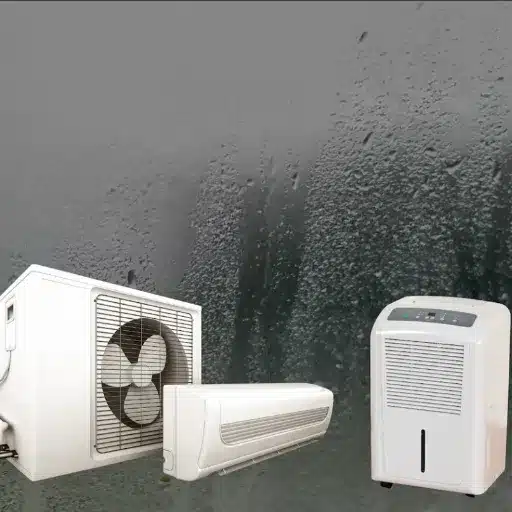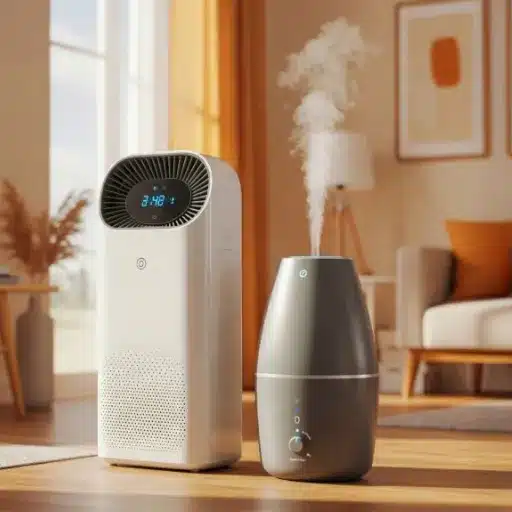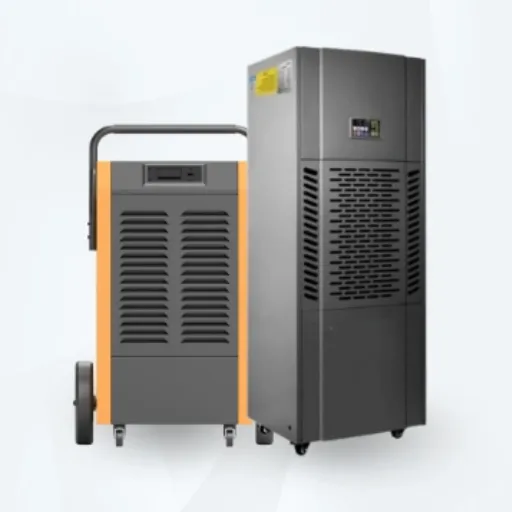Cleaning your home doesn’t just involve scrubbing and dusting – it also means taking care of the air in your home. Excess moisture can create various problems such as allergies, respiratory issues, and even mold and mildew. A dehumidifier can solve these problems. It’s more than just a household appliance; it promotes health and wellness throughout the entire house. This article will explain how dehumidifiers work, the health benefits of using one, and how it improves your living environment. Whether you are dealing with high humidity during certain seasons or looking for a more permanent solution, understanding the importance of a dehumidifier is the first step towards a healthier and happier home.
How Does a Dehumidifier Work to Improve Your Health?
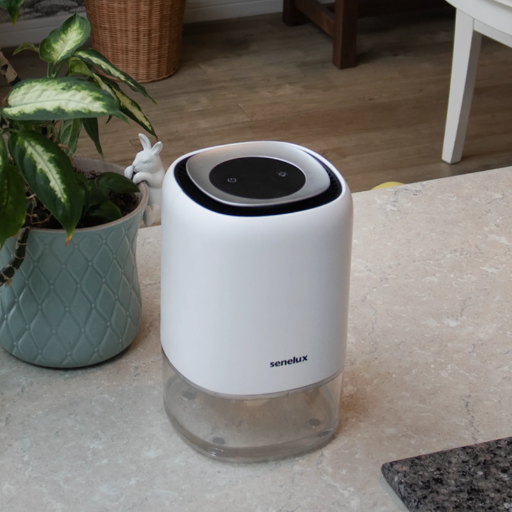
A dehumidifier improves your health by reducing excess moisture in the air, which helps prevent the growth of mold, mildew, and dust mites—common allergens that can trigger respiratory issues. By maintaining optimal humidity levels, typically between 30% and 50%, a dehumidifier creates a more comfortable environment that minimizes discomforts like nasal congestion, coughing, and skin irritation. Additionally, it can alleviate symptoms for individuals with asthma or allergies, promoting easier breathing and better sleep.
Understanding How a Dehumidifier Removes Excess Moisture from the Air
A dehumidifier works by drawing in moist air, extracting the excess water, and releasing drier air back into the environment. The process typically begins with a fan that pulls air into the unit. Inside, the air passes over cold coils, which cool it to a temperature where moisture condenses into water droplets. These droplets collect in a reservoir or drain out via a hose, depending on the model. The dry air is then reheated slightly and expelled back into the room.
Modern dehumidifiers are equipped with advanced technology to optimize performance. For instance, many devices now feature hygrometers to monitor humidity levels, allowing users to set target ranges with precision. According to recent data, the average dehumidifier can remove anywhere from 20 to 70 pints of water per day, depending on the capacity and environmental conditions, making them highly effective for spaces ranging from small bedrooms to large basements. Energy-efficient models also use improved compressors and eco-friendly refrigerants, ensuring that moisture removal is both effective and sustainable. This process not only combats dampness but also protects against structural damage, such as wood rot or paint peeling, caused by excessive humidity.
Optimal Humidity Levels for Health and Home: Maintaining 40-50 Percent
Keeping indoor humidity between 40%-50% is essential for comfort, well-being, and quality of life. Research indicates that keeping this range minimizes the chances for mold, mildew, and dust mites, which worsen air quality, to thrive. Relative humidity above 60% is especially dangerous as it amplifies the growth of allergens that can severely affect health if you’re asthmatic or allergic. Furthermore, humidity less than 30% is detrimental too, as it leads to dry skin and increased susceptibility to respiratory infections.
From a construction perspective, maintaining the 40%-50% range prevents wooden furniture, floors, and walls from the detrimental effects of expanding and contracting due to changing temperatures and humidity. Also, it’s important to note that the 40%-50% range can be seasonally adjusted; ice-cold winters may require the use of humidifiers while the summer months may require the use of dehumidifiers to stay within the recommended range. Lastly, monitoring humidity levels with a hygrometer, an inexpensive and easy-to-use tool, helps ensure a balanced indoor climate throughout the year.
Difference Between a Dehumidifier and an Air Conditioner for Managing Indoor Humidity
Dehumidifiers and air conditioners are both valuable tools for managing indoor humidity, but their functionality and primary purposes differ. A dehumidifier is specifically designed to reduce excess moisture in the air, creating a comfortable and healthy environment by preventing issues such as mold growth and dust mites. On the other hand, an air conditioner focuses on cooling the air, reducing both temperature and humidity as part of its natural operation. However, air conditioners are not as efficient as dehumidifiers when it comes to dedicated moisture control.
Data suggests that dehumidifiers can reduce relative humidity levels by up to 50%, depending on environmental conditions and the device’s capacity. They often consume less energy compared to running an air conditioner purely for moisture reduction. Modern dehumidifiers are rated using factors like pint capacity, which measures how much water they can remove from the air over 24 hours. For instance, a 50-pint dehumidifier is ideal for spaces up to 3,000 square feet with moderate humidity levels.
Air conditioners, by design, decrease indoor humidity as part of the cooling process, but this impact is often secondary and less predictable. The Energy Efficiency Ratio (EER) of air conditioners provides an insight into how well a system manages both cooling and energy consumption. However, in spaces where managing humidity is the primary concern—such as basements or areas with persistent dampness—a standalone dehumidifier is typically the more effective choice, with models consuming around 0.23 to 0.36 kWh for small to medium-sized units per hour, compared to the higher kilowatt-hour consumption of many air conditioners.
Ultimately, choosing between a dehumidifier and an air conditioner depends on your needs—if cooling is a priority alongside humidity reduction, an air conditioner may suffice. For targeted moisture control, particularly without drastically altering room temperature, a dedicated dehumidifier is the best approach for maintaining optimal indoor air quality.
Can a Dehumidifier Help with Respiratory Issues and Allergies?
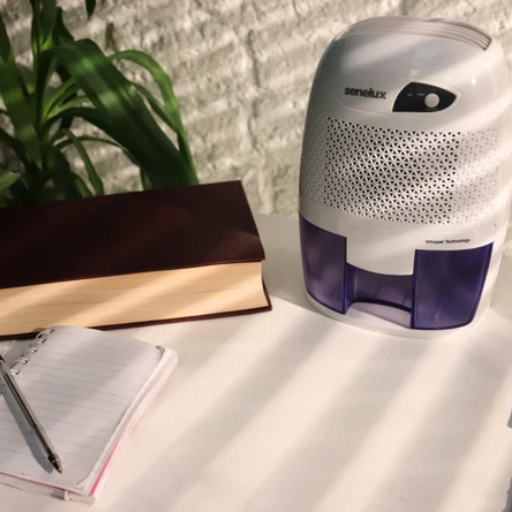
Yes, a dehumidifier can help with respiratory issues and allergies by reducing excess humidity, which often creates an environment where allergens like dust mites, mold, and mildew thrive. Lowering indoor humidity levels can make it more difficult for these allergens to spread, thereby improving air quality and reducing potential triggers for respiratory symptoms. By maintaining an ideal humidity level (typically between 30-50%), a dehumidifier can create a healthier living environment, especially for individuals sensitive to airborne irritants.
How Dehumidifiers Reduce Allergens and Dust Mites in Your Home
Dust mites and allergens thrive in high-humidity environments, particularly in spaces where humidity levels exceed 50%. Dehumidifiers play a crucial role in minimizing their presence by maintaining optimal indoor humidity levels. Studies indicate that reducing relative humidity below 50% significantly disrupts the survival of dust mites, as these microscopic organisms require moisture to stay active and reproduce.
Furthermore, excess humidity encourages the growth of mold and mildew, which are also common sources of indoor allergens. Dehumidifiers actively remove this moisture from the air, inhibiting the proliferation of mold spores. For example, modern dehumidifier models can extract up to 50 or more pints of moisture per day, depending on the unit’s capacity and the space it’s designed to cover, effectively maintaining a healthier indoor atmosphere.
By incorporating a dehumidifier into your home environment, you not only combat the allergens but also enhance overall air quality. This can lead to significant improvements in comfort and respiratory health, particularly for those with asthma, allergies, or other lung-related sensitivities.
Benefits for Asthma Sufferers and Those with Respiratory Conditions
A dehumidifier can play a critical role in managing asthma and other respiratory conditions by reducing excess moisture in the air, which helps limit the growth of mold, mildew, and dust mites—common triggers for asthma and allergies. According to the Environmental Protection Agency (EPA), maintaining indoor humidity levels between 30% and 50% can create a more comfortable and safe environment for individuals with respiratory challenges. High humidity levels can exacerbate asthma symptoms by increasing the concentration of allergens and irritants in the air. Additionally, a dehumidifier assists in preserving surfaces and furnishings by preventing dampness that can lead to harmful molds, further protecting respiratory health.
Recent studies highlight the importance of clean and balanced air for overall lung function, showing that people who experience reduced exposure to airborne irritants report fewer asthma attacks and improvements in chronic respiratory conditions. For instance, research has noted that environments with controlled humidity levels can provide relief for individuals who frequently suffer from congestion or shortness of breath. By proactively managing indoor air conditions, a dehumidifier offers a simple yet impactful way to support respiratory health and reduce the burden of allergens within homes and workplaces.
Improving Indoor Air Quality to Reduce Sneezing and Breathing Problems
The quality of the air we breathe indoors is a contributing factor to health issues, especially for those with allergies or other respiratory problems. Current research indicates that poor indoor air quality can worsen sneezing, coughing, and other allergic respiratory discomforts due to the presence of allergens like dust mites, mold, and pet dander. For instance, installing a HEPA filter can capture up to 99.97% of particles 0.3 microns and larger, greatly improving air quality by lowering allergen concentrations.
Regulating humidity levels is equally as important for preventing the growth of mold and mildew. Physicians advise that indoor relative humidity should be kept within 30-50% to limit an environment that supports allergen growth. Studies have shown that excess moisture can worsen allergies and help spread pathogenic bacteria. Humidifiers, as well as ventilation fans, particularly in bathrooms and kitchens, can help maintain these levels.
Research conducted in chronlogical order consistently shows that indoor spaces need to be ventilated regularly for effective pollutant clearance. Circulation of air can be improved by using windows in areas with lower pollution, or even through ventilation systems with advanced filters.
Will a Dehumidifier Prevent Mold, Mildew, and Musty Odors?
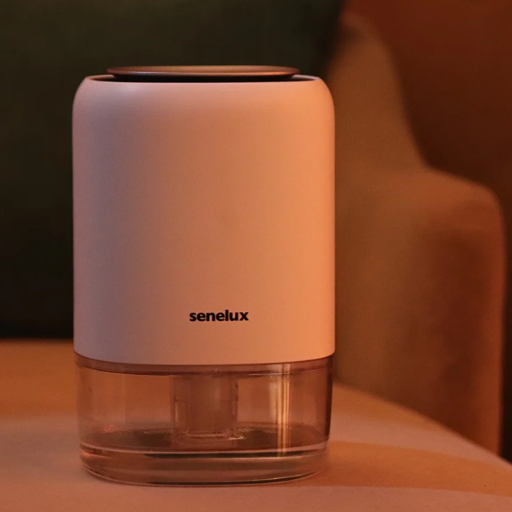
Yes, a dehumidifier can help prevent mold, mildew, and musty odors. By reducing excess moisture in the air, dehumidifiers create an environment where mold and mildew are less likely to grow, as these thrive in humid conditions. Lower humidity levels also help eliminate musty smells often caused by mold and mildew buildup. For best results, aim to maintain indoor humidity levels between 30% and 50%, as this range inhibits mold growth while remaining comfortable for occupants. Regularly empty and clean the dehumidifier to ensure it continues to operate effectively.
How Controlling Humidity Levels Prevents the Growth of Mold and Mildew
Mold and mildew thrive in environments where relative humidity levels exceed 60%, as the moisture in the air provides an ideal setting for their growth. Controlling indoor humidity not only minimizes these risks but also contributes to improved air quality and overall health. Studies indicate that maintaining relative humidity levels between 30% and 50% drastically reduces the chances of mold establishing itself on surfaces such as walls, ceilings, and furniture.
High humidity levels can lead to condensation on cooler surfaces, which acts as a breeding ground for mold spores. Using tools like hygrometers to regularly monitor humidity levels is an effective way to ensure they remain within the optimal range. Additionally, dehumidifiers can remove excess moisture from the air, while proper ventilation in bathrooms, kitchens, and basements helps maintain airflow and reduces trapped humidity. By combining these strategies, households can prevent costly mold damage and protect the well-being of occupants.
Eliminating Musty Odors and Creating a Fresher Indoor Environment
To eliminate musty odors and create a fresher indoor environment, start by identifying the source of the smell, such as damp areas, mold, or stagnant air. Clean and dry these areas thoroughly, as moisture often causes musty odors. Use natural deodorizers like baking soda or activated charcoal to absorb smells, and consider placing air-purifying plants to enhance freshness. Ensure consistent airflow by opening windows or using fans to ventilate the space. Regularly clean carpets, drapes, and upholstery, as they can trap odors over time.
Protecting Your Home from Damp Conditions and Condensation
To prevent moisture and condensation in the home, ensure that windows and ventilation fans are adequately used in bathrooms and kitchens. Check all roofs, pipes, and window seals for any active leaks and address them immediately to avoid water intrusion. During winter months, lower humidity levels with a dehumidifier to remove stored moisture. Attic walls and ceilings also need to be insulated because walls with no insulation are prone to moisture from condensation. Do not leave wet clothes to dry in rooms without ventilation, as this increases humidity levels drastically. Undertake all necessary and scheduled tasks to control moisture levels and mold growth in the home.
What Are the Benefits of a Whole House Dehumidifier vs. Portable Units?
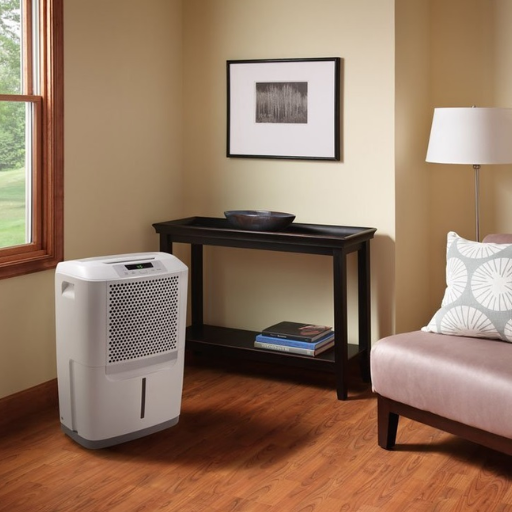
A whole house dehumidifier offers several key advantages over portable units. First, it can manage humidity levels throughout your entire home, making it ideal for comprehensive moisture control, whereas portable units are limited to a single room or small space. Second, whole house systems are integrated with your HVAC setup, allowing for seamless operation and consistent performance without the need for constant adjustment. They are also more energy-efficient over time, as they are designed to handle larger spaces, whereas multiple portable units may consume more energy collectively. Finally, whole house dehumidifiers typically require less frequent maintenance compared to portable units, which often need regular emptying and filter changes. This makes a whole house system a convenient and long-term solution for maintaining comfortable and healthy indoor air quality.
Comparing Whole House Dehumidifier Systems to Single Room Solutions
When comparing whole house dehumidifier systems to single room solutions, I find that whole house systems are more effective for maintaining consistent air quality throughout an entire home. They require less maintenance overall and are energy-efficient in the long run, especially when managing larger spaces. While single room units can be convenient for targeted areas, they often need frequent emptying and filter changes, which can become cumbersome over time. For me, the convenience, efficiency, and broad coverage of a whole house system make it the better choice.
Energy Costs and Efficiency Considerations for Different Dehumidifier Types
When evaluating energy costs and efficiency, I’ve found that whole house dehumidifiers are generally more cost-effective over time despite their higher upfront expense. These units are designed to handle larger volumes of air with greater efficiency, often consuming less energy per square foot than multiple single room units running simultaneously. On the other hand, single room dehumidifiers may seem economical initially, but their frequent operation in multiple areas can lead to higher energy usage overall. From my perspective, investing in a whole house dehumidifier is a smarter choice for long-term energy savings and efficient performance.
How Can a Dehumidifier Help Prevent Pest Infestations?
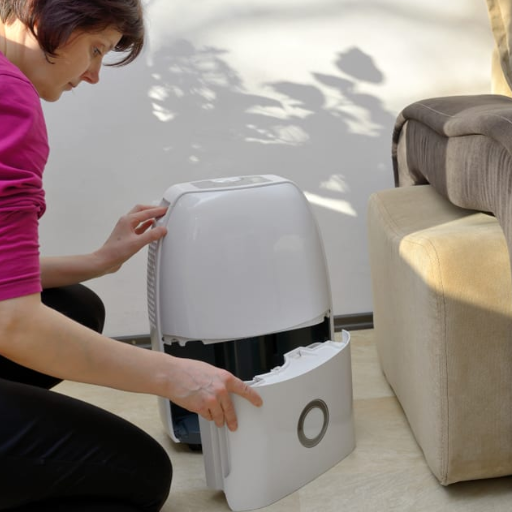
Dehumidifiers help prevent pest infestations by reducing excess moisture, which many pests, such as cockroaches, termites, and silverfish, need to survive and thrive. By maintaining optimal indoor humidity levels, typically between 30% and 50%, dehumidifiers make your home less hospitable to these pests, as they are drawn to damp, humid environments. This proactive moisture control can significantly reduce the likelihood of pest problems, creating a healthier and more comfortable living space.
Why Pests Are Attracted to Humid Environments
Pests are naturally drawn to humid environments because moisture is essential for their survival and reproduction. High humidity levels provide the perfect conditions for pests like cockroaches, termites, mold mites, and mosquitoes to thrive. For example, cockroaches rely on damp conditions to keep their bodies hydrated and to access food sources that are often found in moist areas, such as kitchens, basements, or bathrooms.
Termites, on the other hand, are known for their dependence on moisture to maintain their colonies. Wood softened by excess humidity becomes an ideal feeding ground for termites, accelerating structural damage in homes. According to studies, termites are particularly prevalent in regions with average indoor humidity levels exceeding 50%, which creates an environment conducive to their growth and activity.
Similarly, mold mites feed on fungi that grow in damp environments, making high humidity a double concern—encouraging mold growth that, in turn, sustains the mites. Mosquitoes also use standing water in humid areas as breeding grounds, amplifying their presence dramatically. Keeping humidity within 30%-50%, combined with proper ventilation and moisture management practices, can act as a deterrent for these unwanted visitors, preserving the safety and comfort of your home.
Using Dehumidifiers as Part of Home Pest Control Strategy
Dehumidifiers play a crucial role in reducing indoor humidity to levels that are less conducive to pests like dust mites, mold, and mosquitoes. Maintaining indoor humidity between 30%-50% can create an environment that is inhospitable for these unwelcome intruders. Research highlights that dust mites thrive at moisture levels above 50%, while mold colonies can develop in as little as 24-48 hours in damp conditions. By actively extracting excess moisture from the air, dehumidifiers disrupt these cycles, effectively preventing pest proliferation.
Modern dehumidifiers are equipped with advanced features such as hygrometers, which monitor humidity levels, and auto-drain systems that make them easy to maintain. Some models even incorporate HEPA filters, which assist in trapping airborne particles such as mold spores. For rooms with consistently high humidity—such as basements, kitchens, or bathrooms—using a dehumidifier can drastically reduce pest-related risks.
Additionally, studies suggest that by maintaining dry walls, floors, and other surfaces, dehumidifiers can mitigate water sources that mosquitoes rely on for breeding. Reports indicate that even a single teaspoon of standing water can harbor more than a hundred mosquito larvae. This emphasizes the critical need to eliminate excess indoor moisture, with dehumidifiers acting as a primary line of defense. Investing in a unit suited to your space and climate not only contributes to pest control but also enhances overall air quality and comfort within the home.
What Other Benefits Do Dehumidifiers Provide Beyond Health?
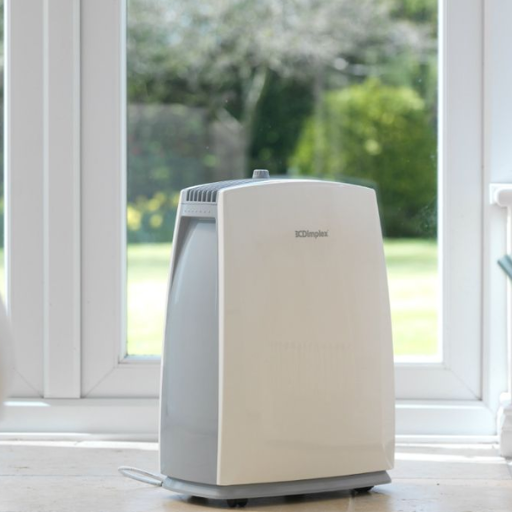
Dehumidifiers offer several advantages beyond improving health. They help protect your home and belongings by reducing excess moisture that can lead to mold growth, mildew, and structural damage. Additionally, maintaining balanced humidity levels prevents warping or deterioration of furniture, flooring, and electronics. Dehumidifiers also create a more comfortable living environment by reducing dampness, musty odors, and condensation on windows, contributing to a fresher, cleaner household.
Protecting Home Furnishings from Warping and Damage
Maintaining optimal indoor conditions is crucial for preserving the longevity and appearance of home furnishings. High humidity levels, for instance, can cause wood furniture and flooring to absorb excess moisture, leading to warping, cracking, or swelling of the material over time. According to industry research, wood typically thrives in an environment with a relative humidity level of 30-50%, ensuring it retains its integrity and shape. Similarly, leather furniture is highly sensitive to fluctuating humidity, potentially drying out and cracking in extremely dry conditions or becoming mold-prone in damp spaces.
By using tools like dehumidifiers, homeowners can keep the air within ideal humidity ranges, preventing damage to prized possessions. Electronics, while not immediately affected by moisture, are also vulnerable to humidity-induced issues such as rust or corrosion inside internal components, potentially shortening their lifespan. Additionally, excessive moisture can degrade fabrics in upholstery, leading to discoloration, odor retention, or mildew growth, all of which can reduce the aesthetic and functional value of cherished items. Proactive control through proper monitoring and adjustments sustains both the comfort of living spaces and the preservation of furnishings over time, ensuring lasting durability and enjoyment.
Reducing Cleaning Needs and Extending the Life of Your Home
A well-maintained home not only ensures comfort but also minimizes cleaning demands and extends the life of its components. Regular, preventive measures can significantly cut down the effort and time spent on intensive cleaning sessions. For instance, using high-quality door mats at entry points can reduce indoor dirt and debris by up to 85%, drastically decreasing the wear on flooring surfaces. Additionally, implementing a no-shoes policy indoors is a simple yet effective way to prevent the accumulation of outdoor pollutants and grime inside the home.
Dust and allergens are common concerns that require consistent management. Utilizing an efficient HEPA air filter within your HVAC system can trap up to 99.97% of airborne particles, ensuring cleaner indoor air and reducing dust accumulation on surfaces. Routine maintenance of appliances, such as cleaning refrigerator coils or ensuring proper ventilation around dryers, prevents dirt buildup and lowers the risk of malfunction—ultimately prolonging their lifespan.
When it comes to protecting surfaces, sealing and treating materials like granite countertops or hardwood floors can add years to their durability. For example, applying a protective sealant on stone surfaces may prevent staining and damage, saving homeowners the additional costs of restoration. Similarly, annual inspections of roofing and plumbing help address minor issues, such as leaks or cracks, before they escalate into costly problems, prolonging the structural integrity of your home.
These proactive habits, paired with quality tools and products, promote cleanliness and ensure your living space remains a long-term sanctuary of comfort and efficiency.
Creating a More Comfortable Living Environment Year-Round
One of the most impactful ways to create a consistently comfortable living environment is by enhancing your home’s energy efficiency. Homes with proper insulation not only maintain a stable indoor temperature but also reduce energy consumption. According to the U.S. Department of Energy, properly insulating attics, walls, floors, and basements can save homeowners up to 15% on heating and cooling costs annually. This improvement not only benefits your wallet but also contributes to a more sustainable lifestyle.
Upgrading to energy-efficient windows and doors is another effective strategy. Modern double or triple-paned windows are designed to minimize heat transfer, keeping your home warmer during winter and cooler during summer. Similarly, weatherstripping doors and sealing gaps can further prevent temperature fluctuations caused by drafts.
Additionally, investing in smart thermostats allows for precise control over indoor temperatures, learning your preferences to optimize comfort. Studies show that using smart thermostat technology can save homeowners an average of 10% to 12% on heating and cooling bills, offering convenience alongside efficiency.
By combining these measures, you can enhance your home’s comfort while reducing environmental impact and boosting your long-term savings.
Reference Sources
Frequently Asked Questions (FAQs)
Q: What are the primary dehumidifier benefits for health?
A: The primary benefit of a dehumidifier is its ability to reduce the level of moisture in your home, which can help mitigate allergens like mold and dust mites, thus improving respiratory health.
Q: How does running a dehumidifier improve the overall wellness of a whole home?
A: Running a dehumidifier helps maintain optimal humidity levels in your home, preventing structural issues like mold growth while also enhancing air quality, which contributes to overall home wellness.
Q: When should I consider buying a dehumidifier?
A: You may need a dehumidifier if you notice condensation on windows, musty odors, or persistent allergies, indicating excess humidity in your home that a dehumidifier can help reduce.
Q: How does a home dehumidifier work to reduce humidity?
A: A home dehumidifier works by drawing warm air currents into its coils, where moisture is condensed into water and collected, effectively reducing humidity levels in your home.
Q: What is the ideal humidity level in your home for optimal health?
A: The ideal humidity level in your home should be between 30 and 50 percent to prevent mold growth and minimize allergens, ensuring a healthy living environment.
Q: Can a dehumidifier help with allergies?
A: Yes, a dehumidifier can help reduce allergens by removing excess water from the air, thereby lowering the humidity and minimizing conditions that allow mold and dust mites to thrive.
Q: Is it beneficial to use a dehumidifier in specific rooms like the basement or laundry room?
A: Yes, using a dehumidifier in specific areas like the basement or laundry room, where humidity tends to be higher, can prevent mold growth and improve air quality in those spaces.
Q: How does a dehumidifier compare to a humidifier in terms of home improvement?
A: While a humidifier adds moisture to the air, a dehumidifier removes it. The benefits of dehumidifiers include reducing humidity with a dehumidifier to prevent mold, whereas a humidifier is used to add moisture in dry conditions.
Q: What are the long-term benefits of using a dehumidifier in your home?
A: Long-term benefits of using a dehumidifier include improved air quality, reduced allergy symptoms, prevention of mold-related structural damage, and overall enhancement of home comfort and health.

